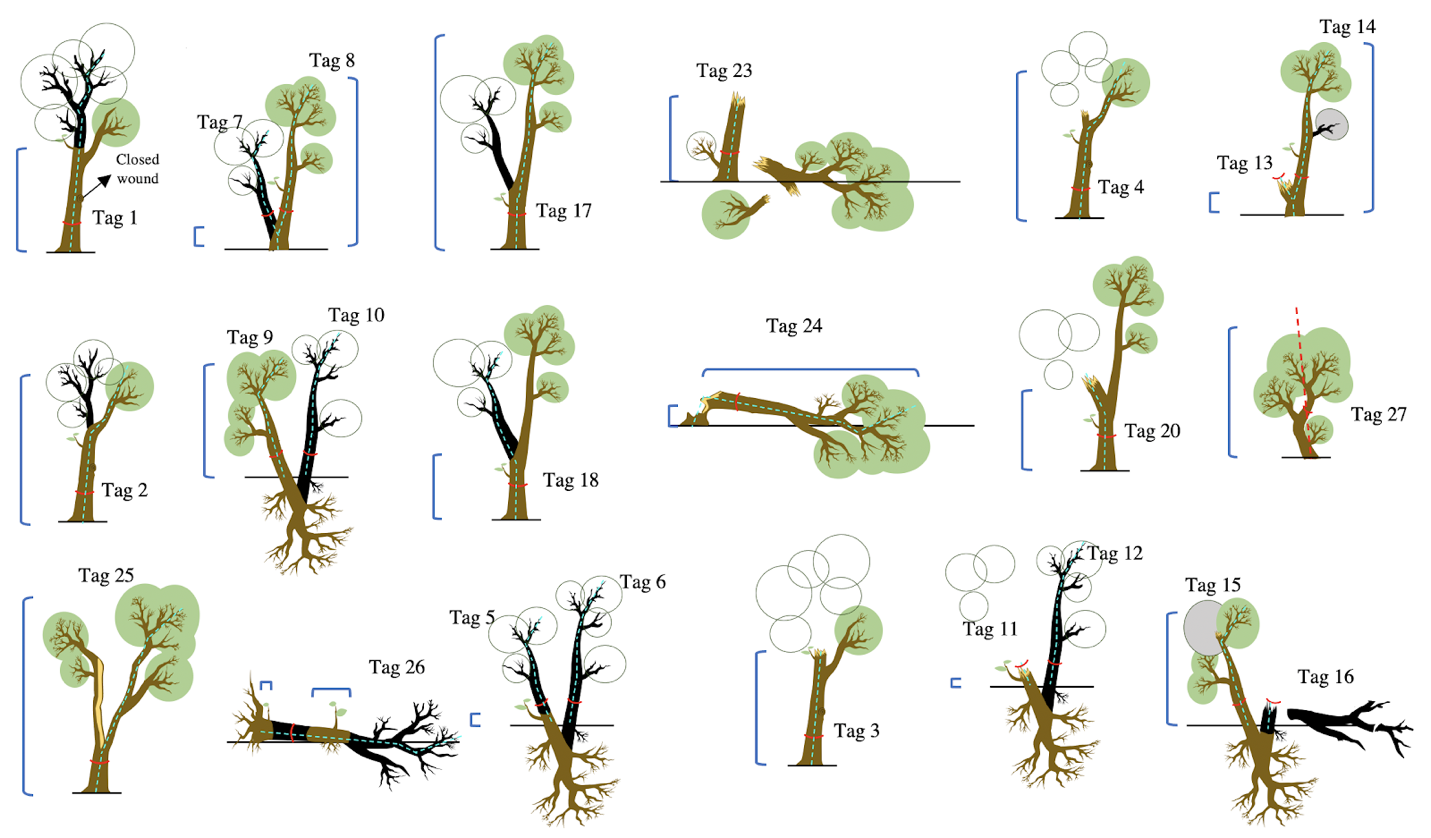The Science
Tropical forests play a critical role in the global carbon cycle. Yet, there is a high level of uncertainty on how these forests will respond to ongoing global environmental changes. This uncertainty is partially attributed to the poor representation of tree mortality in Vegetation Demographic Models. We designed a standardized field protocol to evaluate tree vigor, biomass loss, and factors likely to be associated with future tree death. Advancing the mechanistic inclusion of mortality in vegetation models is a research priority to enable more accurate estimates of terrestrial carbon budgets and predictions of future carbon cycle-climate feedbacks.
The Impact
Although key to predict forest response to global changes, much uncertainty remains on causes and consequences of tropical tree mortality. This study proposes a rapid, repeatable, and inexpensive assessment of individual tree death and damage. It minimizes the effort required at each tree to allow the frequent assessments of more trees. A comprehensive assessment of tree damage coupled with the identification of factors associated with tree death will lead to an improved understanding of the causes of tree mortality and estimates of biomass fluxes in tropical forests.
Summary
Tree mortality drives changes in forest structure and dynamics, community composition, and carbon and nutrient cycles. Since tropical forests store a large fraction of terrestrial biomass and tree diversity, improved understanding of changing tree mortality and biomass loss rates is critical. Tropical tree mortality rates have been challenging to estimate due to low background rates of tree death, and high spatial and temporal heterogeneity. Furthermore, the causes of mortality remain unclear because many factors may be involved in individual tree death, and the rapid decomposition of wood in the tropics obscures evidence of possible causes of tree mortality. We present a field protocol to assess tree mortality in tropical forests. The protocol focuses on the rapid, repeatable and inexpensive assessment of individual tree death and damage. The protocol has been successfully tested with annual assessments of >62,000 stems in total in several ForestGEO plots in Asia and the Neotropics. Standardized methods for the assessment of tree death and biomass loss will advance understanding of the underlying causes and consequences of tree mortality.

Contact: Daniel Zuleta, Forest Global Earth Observatory, Smithsonian Tropical Research Institute, dfzuleta@gmail.com
Funding
This research was supported as part of the Next Generation Ecosystem Experiments-Tropics, funded by the U.S. Department of Energy, Office of Science, Office of Biological and Environmental Research.
Publications
Arellano, D. Zuleta & S.J. Davies, “Tree death and damage: a standardized protocol for frequent surveys in tropical forests”. Journal of Vegetation Science (2020). [https://doi.org/10.1111/jvs.12981]
Related Links
Frequent Tree Damage and Death Assessment, Forest Global Earth Observatory, Smithsonian Tropical Research Institute.